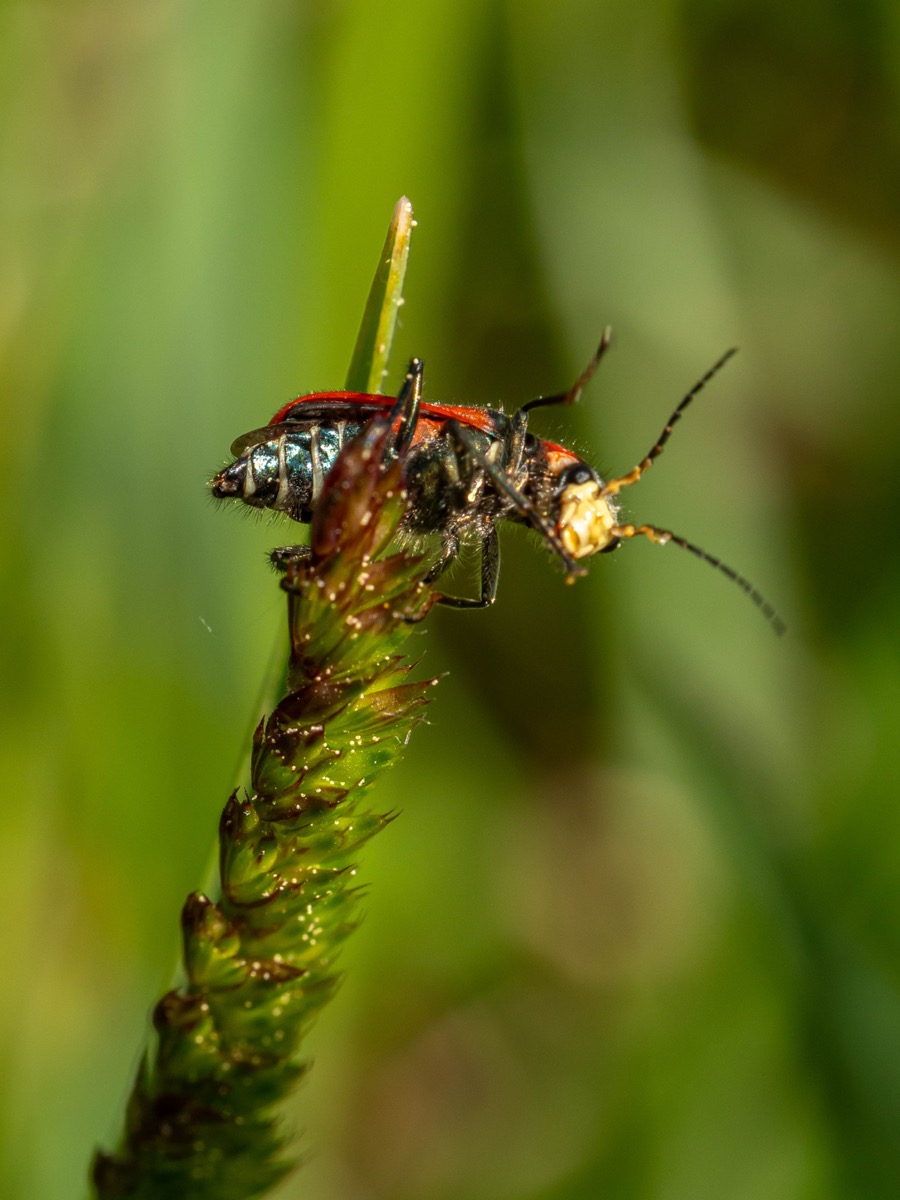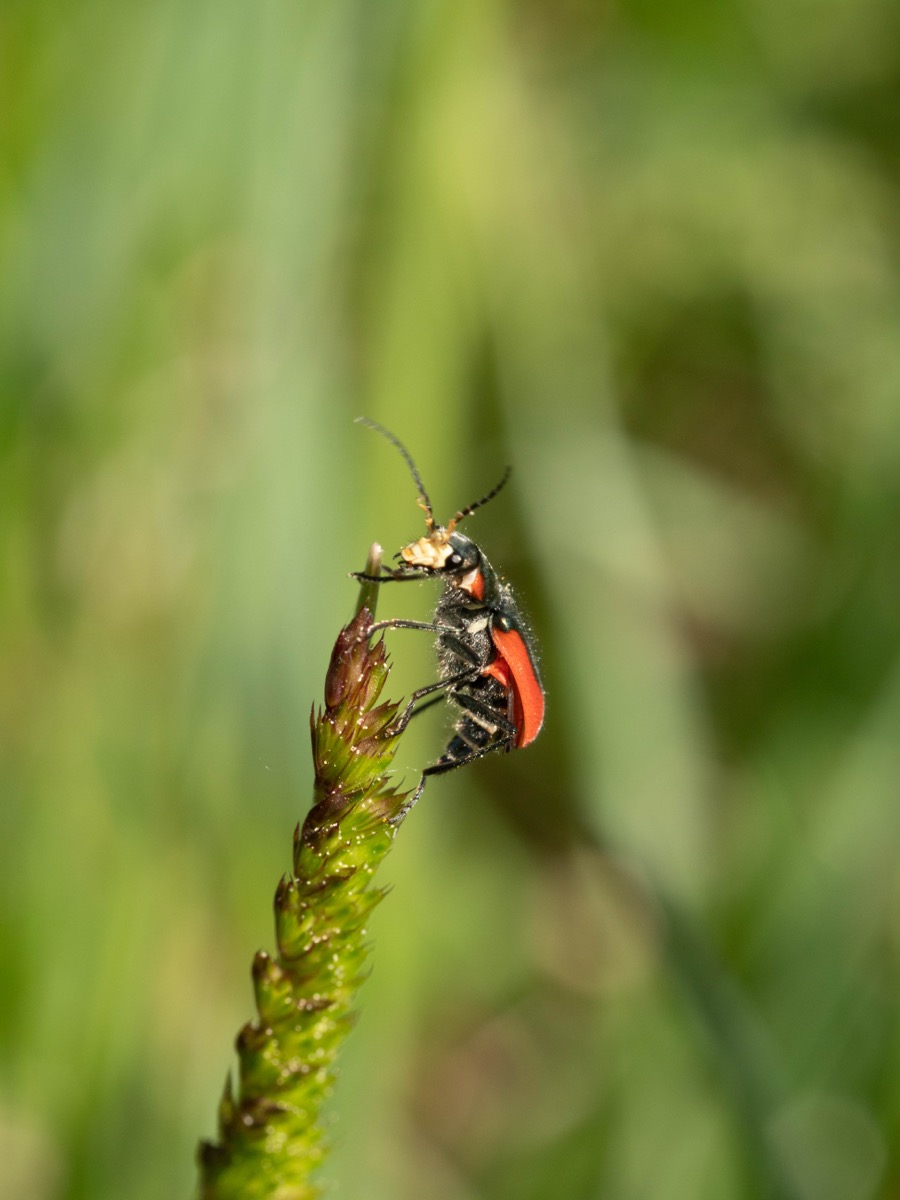The Melyridae – Soft-winged Flower Beetles
Most Melyridae – Soft-winged Flower Beetles have a soft body and an elongated oval shape.
Original description: Leach, 1815
Characteristics
Morphology:
Melyridae are distinguished by their slender, often elongated bodies with filiform antennae. Their elytra may vary in color and patterns, ranging from brown to black to yellow or red.
Diet:
Malachiids have varied diets. Most feed on nectar, pollen, and other plant matter, which often associates them with flowers. Some may also feed on other insects, spiders, or small invertebrates.
Habitats:
Melyridae can be found in a range of habitats, including meadows, wooded areas, wetlands, and gardens. Their association with flowers and plants makes them important for pollination.
Life cycle:
Malachiids undergo complete metamorphosis, including the stages of egg, larva, pupa, and adult. Larvae of some species are predatory and feed on harmful insects in the soil.
Ecological role:
Melyridae have a positive impact on ecosystems as pollinators and regulators of harmful insect populations. Their presence contributes to biodiversity and ecosystem stability.
Economic importance:
Some malachiids can be used in biological control against agricultural pests as natural predators. Their ability to feed on harmful insects makes them potential allies in crop protection.
Malachiinae
Genus Malachius
Malachius aeneus – Bronze Malachius
Original description: Linnaeus, 1758
As adults, the bronze malachius measures 7 millimeters.
It defends itself with a glandular system that produces foul-smelling gases.
Source: Wikipedia
| Order | Coleoptera |
|---|---|
| Family | Melyridae |
| Genus | Malachius |
| Species | Aeneus |
| Common name | Bronze Malachius |
| Identifier | Linnaeus |
| Year identified | 1758 |
| Protected | Not protected |
| IUCN category (2001-2003) | Not classified |
| Habitat | |
| Diet | |
| Color | black-red |
| Antennae | |
| Pronotum | |
| Elytra | |
| Legs | |
| Range | Europe, Asia, North Africa |
| Min size | 6 |
| Max size | 7 |
| Period start | |
| Period end |

